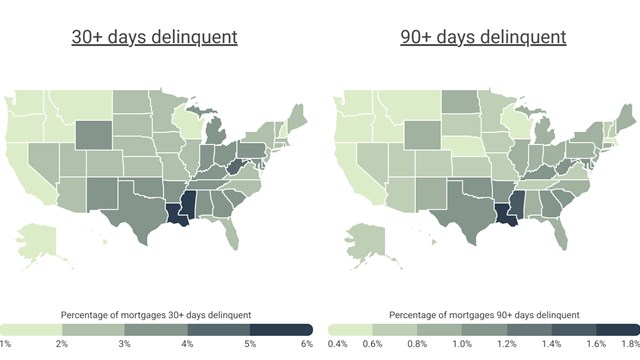Eventually, Manhattan's lower tip could have an economically diverse population, a variety of new retail shops to service them, and more green space. If things go as Mayor Michael Bloomberg hopes, that is. Today, the region's weekday streets turn dark and empty shortly after the sun goes down, while on weekends, they teem with thousands of World Trade Center site tourists. Stabilizing and revitalizing Lower Manhattan is a task that is occupying the efforts of a score of government and community organizations; some focusing on attracting and retaining the downtown residential community, others on reestablishing commercial concerns below Houston and Canal Streets.
While the vast majority of residents displaced 18 months ago have returned to their homes after the post-Sept. 11th evacuation, those who didn't move back have been replaced by new people; many wooed by federal rent and mortgage subsidies.
Defying post 9/11 predictions of a Downtown ghost town, moving downtown is a gamble, but one many seem willing to take. Occupancy rates are back to where they were prior to the September 11, 2001 attacks - about 95 percent, in other words. Exactly how much of a gamble it is to invest or move downtown depends on the faith put in municipal monies coming through, on voters not losing interest in redefining downtown, and businesses - both employers and service providers - moving down there. For some, that's quite a leap, especially in the short term.
Besides a few families moving to Battery Park City to take advantage of kid-friendly parks, "It's quiet down there now," says Steven Hauser, a longtime real estate broker with the Corcoran Group's Soho office. Yet, he adds that with the new WTC site and a host of regional improvements, the region could end up a great investment opportunity.
"More so than ever, people will come to see that site," Hauser says. "I think the whole world is going to walk down Greenwich Street, and all those buildings are going to double - if not triple - in value"¦in five to 10 years."
On average, downtown prices are only slightly below those found elsewhere in Manhattan, according to Corcoran's 2002 figures, which define "Downtown" as anything below Houston Street. On average, downtown one-bedroom co-ops are going for $357,000; comparable condos for $408,000. By comparison, an East Side one-bedroom co-op goes for around $390,000; a condo for $519,000. On the West Side, a one-bedroom co-op will cost you $392,000; you can get a condo for $558,000 or so.
Downtown property prices have remained strong, agrees Karen Gastiaburo, who heads William B. May Company's TriBeCa office and defines "Downtown" as the Financial District, Battery Park, and TriBeCa.
There was a lot of regional real estate market activity after the attacks and during the first quarter of 2002, says Gastiaburo. "We thought that [the downtown real estate market] was just going to plummet and it didn't. While the rental market took a hit, the sales market leveled out. Now, people keep thinking and waiting for it to turn into a buyer's market."
According to Gastiaburo, prior to September 2001, some downtown properties were overpriced, and the attacks acted as a market correction. "If anything," she says, "it put them at market price - which was still high."
As things stand now, properties range from about $300,000 to $1.5 million or so, making for some good deals, says Gastiaburo. For example, in January, she had an 875-square-foot, one-bedroom apartment on Pearl Street listed at $399,000. "That apartment on the Upper West Side would go for $550,000."
The Financial District offers a mixture of co-ops and condos. In Battery Park City, condos are more common. According to Gastiaburo, some people think Battery Park City is a little out of the way, but once they get there, they find a lovely neighborhood complete with parks and the waterfront for a backyard.
It's not all perfect, of course. Downtown brokers don't hesitate to point out that one problem endemic to Lower Manhattan is high monthly maintenance fees, thanks largely to so many buildings having 99-year ground leases.
Another consideration for those thinking of moving downtown is ongoing noisy, dusty construction work at and near the WTC site. There's no telling when exactly that will end, because even the completion of work on the WTC site is just the beginning: the hope is that multiple new commercial venues will open nearby to attract and cater to residents, workers, and tourists. "You're going to have to be somewhat selective (and patient) for the next couple of years," Gastiaburo says.
Scores of community and government agencies are calling for the creation of more housing downtown, though how to go about that is unclear.
Officials at the Citizens Housing and Planning Council (CHPC), a nonprofit policy research and advocacy organization, estimate that three million square feet downtown could be renovated into housing without hurting the commercial real estate market. Three neighborhoods with older buildings that could be renovated are the South Street Seaport, TriBeCa South and what the council likes to call Battery Park City East.
These proposed developments would come on top of the 9,500 new living residential units created in the last seven years, according to a CHPC spokesperson. In the 1990s, Lower Manhattan was home to more than a fifth of Manhattan's new housing units - mostly since 1995 - according to a study by the Alliance for Downtown New York. The Downtown Alliance is the Business Improvement District (BID) serving the area south of Chambers Street. The Lower Manhattan Development Corporation (LMDC), which administers the awarding of financial incentives to downtown residents, is just beginning to study downtown's housing situation, and will eventually release its own findings and data.
According to Mayor Bloomberg in a speech he delivered in December of 2002 at the Regent Wall Street Hotel, "While the number of people who live below Chambers Street has grown significantly - from 12,000 to 20,000 in the past 10 years - other than Battery Park City, for residents there isn't a there there."
To remedy this, Bloomberg wants to create two new downtown neighborhoods. He'd like to see one created near Fulton Street east of Broadway, and another south of Liberty Street, west of Broadway. Both areas would be anchored by new parks: Fulton Market Square, and Greenwich Square.
Attractions such as these - as well as more schools for children and a new New York Public Library branch - might bring an influx of people that would make it more attractive for retail and other commercial operations to locate downtown, Bloomberg says.
Doing without supermarkets and other basic neighborhood staples hasn't been as big a deal for the young, childless Manhattanites who can walk to work downtown and are making six figures. As a result, that's often who lives downtown. About 40 percent of downtown residents either work at home or nearby downtown, according to a survey by the Downtown Alliance. Ninety percent work in Manhattan. The subway stations may be empty at 11 p.m., but many downtown residents can afford to take a cab. Grocery stores take a back seat to take-out places.
But having a homogenous populace doesn't always make for a vibrant neighborhood. "If you have a very high income and a sort of uniform population"¦ it may give you a certain threshold for dry cleaners, but not necessarily for delicatessens," says Frank Braconi, executive director of the CHPC.
He and others want the region to be inviting to a variety of people, including people of lower incomes and people with families. And having a variety of people, working a variety of hours, on the streets, means providing a variety of housing levels.
"We have nothing against market rate housing, [but] if that's all you build down there, you're going to get a fairly [uniform] demographic," says Braconi. Another reason to bring more residents to the region is to spur the exchange of ideas, and thereby inspire societal innovation.
"There's a lot of research"¦in the last 10 years that indicates that urban economies prosper when there's a diversity of ideas and an open kind of civic culture. That it's not just that it makes the street colorful, but that it actually leads to a faster rate of innovation and economic growth," Braconi says. "There's a fear that New York City's cutting edge in business innovation could dissipate if the demographics of Manhattan become too uniform."
It would be easier to spread ideas downtown, though, if it were easier to get around. Bloomberg has proposed the creation of a free regional bus service, as well as a long, hard look at the region's public transportation system - including train, bus and ferry services.
"We have under-invested in Lower Manhattan for decades," notes Bloomberg. "It's been 70 years since we built a new transit line downtown." He and others are using momentum created by the World Trade Center attacks to work towards transforming the region, despite severe budget shortfalls.
"If you study New York history, you realize that it is often at the moments when New York has faced its greatest challenges that we've had our biggest achievements," Bloomberg said in his address. "Central Park was created on the heels of a financial panic. The Empire State Building, too, was constructed in just 13 months during the Depression's deepest moments."
Ironically, the 2001 attacks gave the region probably its best chance for rapid improvement. A lack of amenities for downtown residents, for example, is an old problem, and one that locals were examining long before the Twin Towers fell.
If attention remains on Lower Manhattan for long enough, and money is found, the region could become more like the city's other 24-hour neighborhoods than just a 9-to-5 financial district. For his part, Braconi sees the entire area around the WTC undergoing a kind of renaissance. "They won't even call it a financial district," he says of the area after all is said and done, "they'll call it something completely different, if they're successful."






Leave a Comment